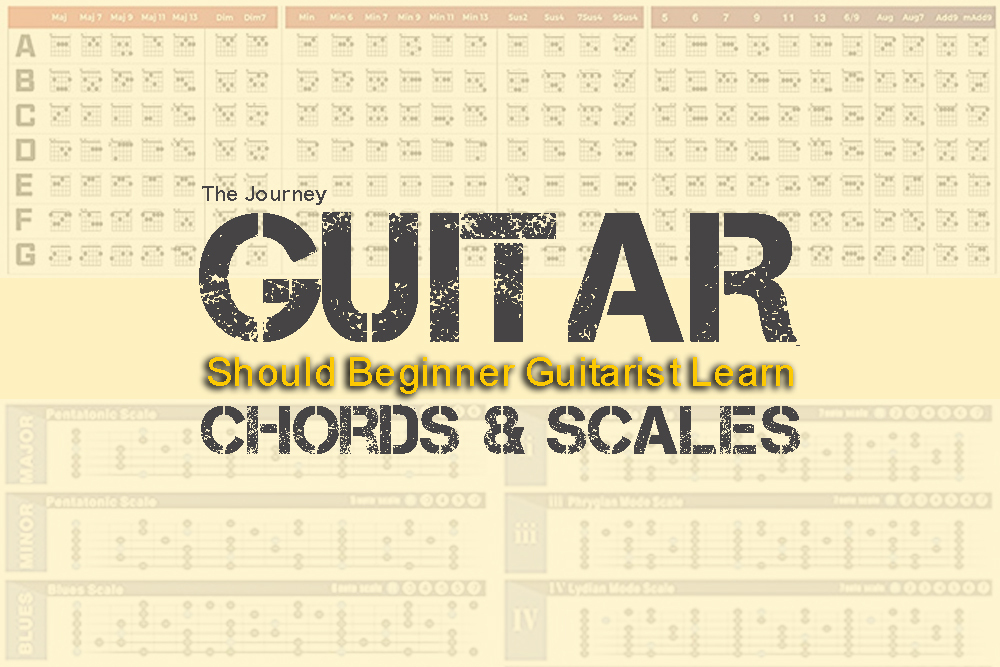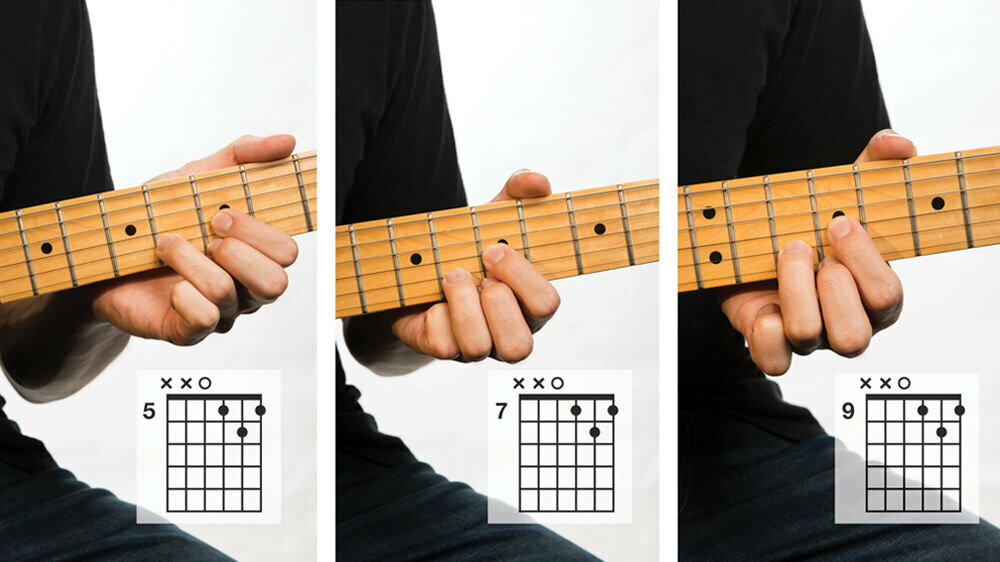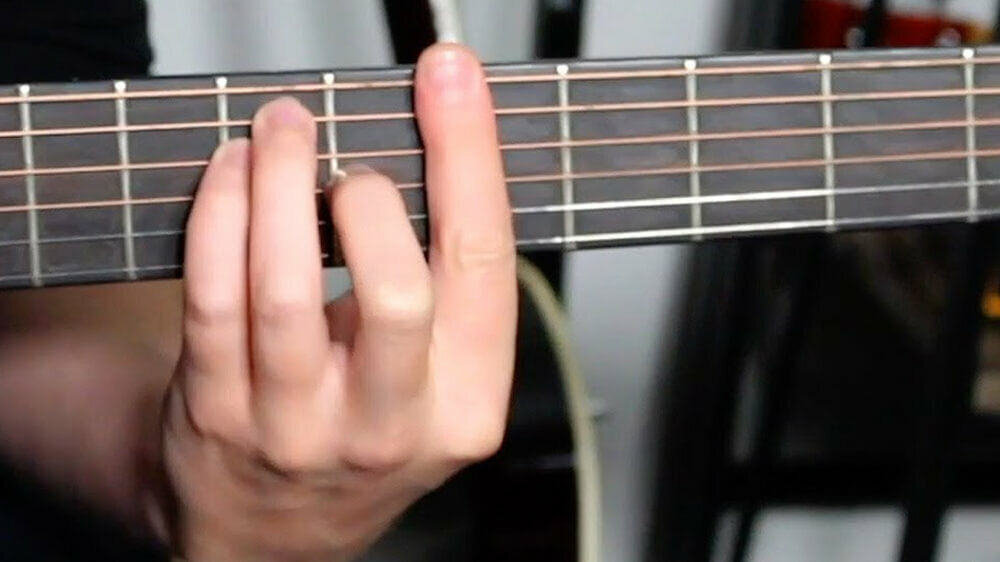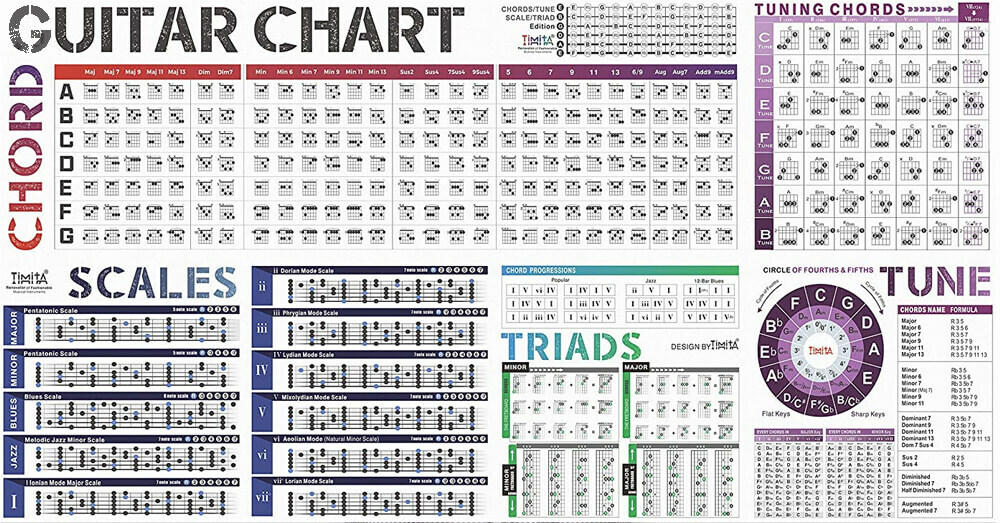
As a beginner guitarist, you’ve probably heard a lot about learning guitar chords and scales. And it’s natural for you to have questions about what they are, their differences, and whether there is an order in learning one before another.
For a basic understanding of what chords, scales, and key signatures are, please refer to our article on ‘Should Guitar Beginners Learn Music Theory’.
When it comes to learning guitar chords and scales, you can look at it this way.
Guitar chords are the harmonic embodiment of music notes. By learning guitar chords first, you’ll develop a sense of harmony and how things sound in relation to each other, thus creating a structural foundation, on which you can later build your guitar scales knowledge.
In this article, we shall be exploring the nitty-gritty of what it means to be learning guitar chords and scales as a beginner guitarist.
 Learning Guitar Chords for Beginner Guitarists
Learning Guitar Chords for Beginner Guitarists
Apart from learning how to strum and pick in the initial stages of learning the guitar, learning guitar chords first is probably the most important thing you can do, for 2 reasons.
- Reason number 1: Learning guitar chords allows you to build strength and mobility in your fingers in a structural way via the different chord shapes. This will then prepare you for more complex movements in the future as you advance.
- Reason number 2: Learning guitar chords can help maintain a certain level of motivation during the learning phases of a beginner’s journey. Especially when you are able to start playing songs you like and seeing the progress you’ve made.
In the beginning, all you really need to learn is the basic major chord shapes of C, D, E, F, G, A, and B. These are the easiest chord shapes of all, and any complex chord shapes are almost always built on these simple shapes.
The B chord, in this instance, would be your first encounter with something called the barre chord. Barre chords are tough for beginners, but make sure you get used to it, because there will be plenty of barre chords in the future, and if you can hold a barre chord, you can play it anywhere on the fretboard.

Once you’ve gotten comfortable with holding these shapes and playing a clean sound with them, you can move on to learning the basic minor chords Cm, Dm, Em, Fm, Gm, Am, and Bm.
In this set of chords, Dm, Em, and Am are easy chords to handle. But you’ll also be introduced to 4 more barre chords, Cm, Fm, Gm, and Bm.
Remember, you’ll need this phase of finger training. The better you get here, the easier it gets later when you’re playing more complex stuff. So hang in there, don’t give up.
And once you’ve mastered the above major and minor chords, you can pretty much play anything out there. There will be times when you’ll bump into weird chords like G7 or Asus, etc. But you can easily learn these chords individually.
But here’s where the fork road between staying as an average guitarist or becoming an advanced guitarist appears.

As an average guitarist, if you’re happy with just playing a few trendy tunes to entertain yourself and your friends, you can easily arrive at this stage within consistent practices over a few months, and your journey stops here.
But to become an advanced guitarist, you would want to understand the difference between a G chord, an A chord, and a G7 and Asus chord, and why. And this is where learning music theories such as key signatures and guitar scales come into play.

Learning Guitar Scales for Beginner Guitarists
Imagine you’re learning to cook for yourself, you bought some pasta, a can of tomato sauce, and some vegetables and you learn to put these ingredients together and you’ll have yourself some tomato pasta for dinner.
But if you’re really serious about cooking, then you might have to start learning to make your own pasta from flour and water, your own tomato sauce and make it into the right kind of taste you want. Learning guitar scales is a little like that.
By learning guitar scales (of any sort), you’re essentially learning the fundamental building blocks of each chord or scale. And through the rearrangement of these blocks, you’re able to create a melody of your own, which is in harmony with other musicians or music you’re playing along with.
To explain the relationship between guitar chords and guitar scales, let’s use a simple example of you playing the following chords, C major, F major, G major, and back to C major.
To play it as a beginner guitarist, you’ll simply strum or pluck these chord patterns as they are in their progression order. But as an advanced guitarist with scale knowledge, you have more options.
You can choose to play it using the C major scale (since C, F, and G are notes of the C major scale), with the notes in different successions. You may also play the C, F, and G major scales, each replacing the C, F, and G major chords respectively.
And yet again, you can also play the scales over the chords as a melodic addition, which is typically seen in the form of a guitar soloist playing a lick over a set of harmonic chords, matching in keys.
The video below shows an example of playing scales over a simple chord progression with the chords D major, C major, and G major.
 How Many Guitar Scales Should a Guitarist Learn
How Many Guitar Scales Should a Guitarist Learn
When it comes to the number of guitar scales there are, it is slightly more complicated than knowing how many chords there are. With all the different variations and types, from major to minor scales, pentatonic to modes, there can easily be more than hundreds of scales available.
But the good news is, you do not have to learn every one of them to be good. You only need to start understanding what they do and learn the ones that are useful to you.
For the most part, getting yourself familiarized with the basic major and minor scales (also known as the heptatonic scales), and pentatonic scales is more than enough.
There are 12 major scales, one for each key (C, D, E, F, G, A, B), so you have the C major scale, D major scale, A major scale, etc. each with their respective group of 7 notes and sequences.
Then you have 12 minor scales, one for each key as well, and likewise, each has its own group of 7 notes and sequences.
And then you have the pentatonic scales, 5 different shapes across the major and minor scales, each with their own groups of 5 notes.
At this point in time, do not worry about what they are yet. Without complicating things, just know that scales are something you use to spice things up. They are the different ingredients and recipes to which you can make a tomato sauce of your own liking.
For instance, if you want to spice up something from the major chords, then you can start by looking at the major scales or major pentatonic scales. If the music is in the key of C major, then look up the C major scale, or C Major pentatonic scale, and so on and so forth.
On how guitar scales and chords work together, it can be made simple, or it can also become complicated, depending on how you go about it. There is no reason why you cannot use the minor pentatonic scale over a set of major chords.
The basic rule of thumb is this, it’s all about exploring different possibilities to produce music that is harmonious, and pleasing to the ear. Music is a living and breathing thing.
In conclusion, the content of this article is not to teach music theories but to serve as a roadmap if you would, to help you see the path ahead of you. While at the same time clearing up some misconceptions or confusions you may have in regards to chords and scales, what they are, and what you should learn.
Rock On |nn|,
Related resources:
How to Use Scales Over Chords – Guitar Lesson
Soloing Over Chord Changes on Guitar:
"A" major pentatonic run – easy electric guitar lesson






